





 |
 |
 |
 |
 |
 |
| Brooks Rownd | profile | all galleries >> Hawai'i >> Stranded In East Hawai'i >> Jan 4-7, 2010 - 2010 Palila Survey, Mauna Kea | tree view | thumbnails | slideshow |
I just got back from this year's palila survey on Mauna Kea. For 3 days we counted birds on 13 transects on the south and southwest slopes of the mountain, covering the core palila critical habitat. The weather has been unusually hot and dry for the past few weeks, which may have effected the bird activity. Fortunately the winds were very light so we were able to finish the counts quickly and get out of the Sun in the early afternoon. Palila counts appeared to be down again, perhaps due in part due to the weather, though the count data have to be run through the computer before the real population estimate is made.
Click Here To Read The Full Report, With Maps and Photos
On the first day I counted the top of transect 102, beginning near the upper edge of the sparse mamane forest of the dry upper slopes. My third of the transect ended before entering the thicker naio in Ka'ohe GMA. We encountered about 7 palila in the first 5 stations, before climbing over one of the twin cones. This is near the usual area of highest palila concentration. Below the twin cones the palila were much more sparse, and we only counted 3 more that day. Many of the palila were fairly distant, and few were within the cut-off radius for the population model. It was a very low count for this transect.
The second day I did the top of transect 123, beginning on the slopes of Pu'u Banko at the very upper edge of the mamane shrubland. The first station was at a parking area, which was a little archeological site. There were scattered sheep bones and trash. From between a couple of rocks I picked up an old steel can of "Orchid Isle Punch" in good condition. At the second station I got my closest view of a palila for the day. I counted 6 palila in the first 12 stations, but almost all were beyond the cut-off distance for the population model. Another fairly low count. The footing on this transect was a nightmare as I tried to hurry from station to station, and I fell several times as fist-sized clinkers rolled away under my feet. It flattened out at the bottom, where the thickening naio became a further nuisance. Nevertheless, no amount of cuts, bruises, dust and sweat could ever ruin such a great experience.
On the last day I got a nice change of scenery when I did the bottom third of transect 122. This transect started in sheep-battered naio forest, with a lot of churned soil and bark stripping. We only detected one palila on the whole transect, at the first station. Eventually the transect moved into a more open shrubland that was populated by increasing numbers of 'akoko (spurge) and 'iliahi (sandalwood) trees. At the bottom of transect 122 we were in an open shrubland cut by numerous small gulches, and the flora was more diverse. Grasses and 'a'ali'i shrubs dominated, with scattered na'ena'e shrubs and naio, mamane, 'akoko and other trees. It was a part of Ka'ohe GMA that I've never seen before. After finishing the transect we crossed the shrubland for a few hundred meters before finding the firebreak road that lead us several miles back to Saddle Road.
Bird counts during the survey were low overall, and were even low compared to my other visits to Ka'ohe GMA over the last month. I didn't hear several birds at all: 'elepaio, 'apapane, turkey, northern cardinal, Japanese bush-warbler, and african silverbill, and we didn't see any pueo or 'io. Palila numbers were low on most transects, with the exception of a few which were detected at the eastern fringe of the habitat on transects that usually have low palila frequency.
Counts were finished by noon, and in the afternoons I occasionally counted birds around the cabin area at Pohakuloa. This very dry forest of mamane, naio and 'aheahea shrubs has birds I seldom see such as northern mockingbird and african silverbill. I didn't see any silverbills this year, but one or two mockingbirds were near the camp site daily and I had a good chance to watch and hear them.
I didn't take many photos, and may add one or two later. Otherwise I attached some from last year's survey.
Below are a summary of the 6-minute point counts. These aren't the real VCP counts, but give an idea of what they contain. I loaded maps of the transects in the image section.
102-Top: (Species Codes Here)
| station | time | HAAM | PALI | JAWE | HOFI | EUSK | YFCA | RBLE | CAQU | ERFR | Notes |
|---|---|---|---|---|---|---|---|---|---|---|---|
| 102-1 | 0725 | 3 | 1 | 1 | |||||||
| 102-2 | ???? | 5 | 2 | ||||||||
| 102-3 | ???? | 3 | 2 | 1 | |||||||
| 102-4 | ???? | 3 | 4 | ||||||||
| 102-5 | ???? | 5 | 3 | 1 | 1 | ||||||
| 102-6 | ???? | 1 | |||||||||
| 102-7 | ???? | 3 | 3 | ||||||||
| 102-8 | ???? | 7 | 1 | 3 | |||||||
| 102-9 | ???? | 6 | 2 | ||||||||
| 102-10 | ???? | 9 | 1 | 2 | 1 | ||||||
| 102-11 | ???? | 5 | 2 | 3 | |||||||
| 102-12 | ???? | 3 | |||||||||
| 102-13 | ???? | 6 | 1 | 2 | 6 | ||||||
| 102-14 | ???? | 2 | 1 | ||||||||
| 102-15 | ???? | 7 | 1 | 2 | 1 | 3 | |||||
| 102-16 | ???? | 4 | 1 | ||||||||
| 102-17 | ???? | 5 | 1 | ||||||||
| 102-18 | ???? | 4 | 1 | ||||||||
| station | time | HAAM | PALI | JAWE | HOFI | EUSK | YFCA | RBLE | CAQU | ERFR | Notes |
123-Top: (Species Codes Here)
| station | time | HAAM | PALI | JAWE | HOFI | EUSK | YFCA | RBLE | CAQU | ERFR | Notes |
|---|---|---|---|---|---|---|---|---|---|---|---|
| 123-1 | 0705 | 2 | 1 | 1 | |||||||
| 123-2 | ???? | 3 | 1 | ||||||||
| 123-3 | ???? | 2 | 1 | 14 | |||||||
| 123-4 | ???? | 6 | 1 | 1 | |||||||
| 123-5 | ???? | 2 | 8 | ||||||||
| 123-6 | ???? | 5 | 1 | 2 | 5 | 2 | |||||
| 123-7 | ???? | 3 | |||||||||
| 123-8 | ???? | 4 | 2 | 1 | 1 | ||||||
| 123-9 | ???? | 5 | 1 | 3 | 1 | 1 | |||||
| 123-10 | ???? | 3 | 3 | ||||||||
| 123-11 | ???? | 3 | 1 | ||||||||
| 123-12 | ???? | 6 | 1 | 1 | 3 | ||||||
| 123-13 | ???? | 3 | 1 | 1 | |||||||
| 123-14 | ???? | 7 | 1 | 1 | |||||||
| 123-15 | ???? | 4 | 1 | ||||||||
| 123-16 | ???? | 4 | 2 | ||||||||
| 123-17 | ???? | 5 | 1 | ||||||||
| 123-18 | ???? | 8 | |||||||||
| 123-19 | 1155 | 3 | 1 | ||||||||
| station | time | HAAM | PALI | JAWE | HOFI | EUSK | YFCA | RBLE | CAQU | ERFR | Notes |
122-Bottom: (Species Codes Here)
| station | time | HAAM | PALI | JAWE | HOFI | EUSK | YFCA | RBLE | CAQU | ERFR | Notes |
|---|---|---|---|---|---|---|---|---|---|---|---|
| 122-30 | 0705 | 3 | 1 | 3 | 1 | ||||||
| 122-31 | ???? | 6 | 4 | 1 | |||||||
| 122-32 | ???? | 6 | 2 | ||||||||
| 122-33 | ???? | 6 | 1 | ||||||||
| 122-34 | ???? | 5 | |||||||||
| 122-35 | ???? | 5 | 2 | 1 | |||||||
| 122-36 | ???? | 9 | 1 | 5 | |||||||
| 122-37 | ???? | 3 | 2 | 2 | |||||||
| 122-38 | ???? | 4 | 7 | 8 | 1 | ||||||
| 122-39 | ???? | 2 | 3 | 4 | |||||||
| 122-40 | ???? | 1 | 2 | ||||||||
| 122-41 | ???? | 1 | 3 | 2 | 1 | 3 | |||||
| station | time | HAAM | PALI | JAWE | HOFI | EUSK | YFCA | RBLE | CAQU | ERFR | Notes |
Pohakuloa Counts: (Species Codes Here)
| station | time | HAAM | JAWE | HOFI | HOSP | NOMO | COMY | RBLE | Notes |
|---|---|---|---|---|---|---|---|---|---|
| 1/4/10 | 1710 | 1 | 3 | point count, 10min | |||||
| 1/4/10 | 1720 | 1 | 1 | 2 | point count, 10min | ||||
| 1/5/10 | 1330 | 1 | 2 | 10 | 3 | area count, 20min | |||
| 1/5/10 | 1430 | 1 | 7 | 1 | area count, 20min | ||||
| 1/5/10 | 1715 | 1 | 4 | 8 | 1 | 1 | area count, 20min | ||
| 1/6/10 | 1440 | 2 | 7 | 2 | 2 | 1 | 1 | area count, 20min | |
| 1/6/10 | 1612 | 2 | 8 | 6 | 2 | 2 | area count, 20min | ||
| station | time | HAAM | JAWE | HOFI | HOSP | NOMO | COMY | RBLE | Notes |
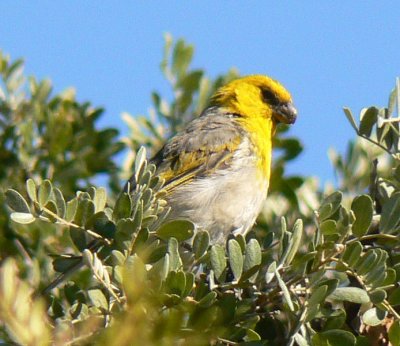
[ Palila ] |
 palila_2010_big.gif |
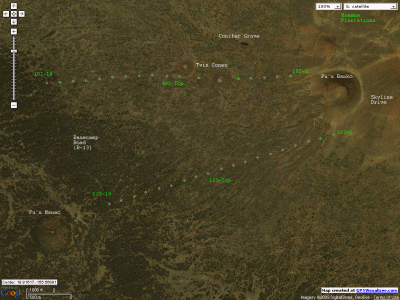 palila_2010_tops.gif |
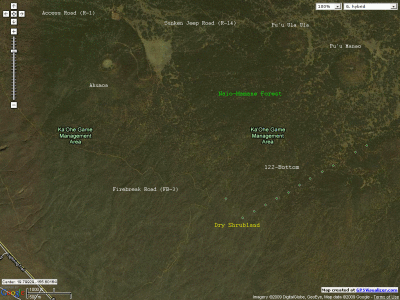 palila_2010_122bot.gif |

[ Pohakuloa ] |
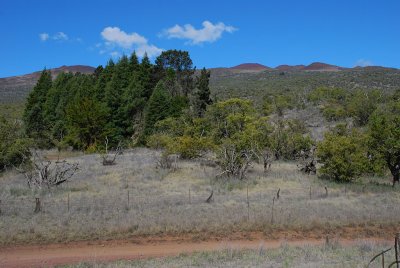
[ Ka'ohe GMA ] |
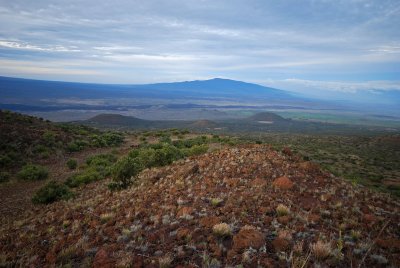 Transect 126 |
 Transect 108 |